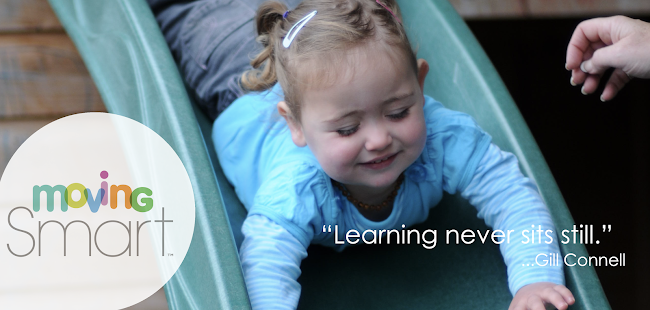We track their growth with tape measures, scales, and percentiles, amazed at how it all happens right in front of our eyes – one minute a tiny sleeping bundle, the next an armful of giggles, the next we’re putting the breakables out of reach.
But to me, the growth we can’t see – the growth of the brain -- is even more astonishing.
HOW THE BRAIN GROWS
There are varying opinions on the number of cells in the human brain at birth, so for our purposes, let’s just call it billions and billions. Now, with that many, you’d think we’d come out of the birth canal ready for Harvard. But we don’t for one simple reason. While the brain is chock full of neurons, most are unable to function until they make connections with other neurons in the brain.
According to the experts, at birth, only about 10% of neurons in the human brain are connected and fully operational – just enough to enter the world and survive in our atmosphere. Mostly that means the lower regions of the brain are active, controlling breathing, heart beat, body temperature, primitive reflexes, and a limited amount of (mostly unintentional) muscle movement. In other words, what comes “on board” is just enough to get started in life. The rest must be developed.
And that development – or neural connector growth, to be more precise – happens at an intense rate from the first breath to the first day of school. In fact, experts believe 90% of the neural connections in the brain are in place by age five… a rate of development far outpacing the physical growth of the body we measure at the doctor’s office.
Simply put, your child’s preschool years are the pivotal, defining period for growing critical connections in the brain that he will need for the rest of his life.
Now, that’s a big statement, and I’m sure you’re wondering what on earth you can do about it. So let me say this as plainly as I can…
The most powerful tool for fostering the growth and development of neural connections in your child’s brain is physical movement. That’s right, MOVEMENT.
WHY MOVEMENT MATTERS
When your child’s body engages in any physical experience, his senses are engaged and his brain records it, building a bank of knowledge over time. With enough repetitive experience, his brain cells begin to connect and create associations – the very foundation of his growing awareness and understanding about the world and his place in it.
By example, imagine what your child is experiencing when you hold him in your arms during those first, precious days. At first, he will register your embrace as bits of independent information. For instance, your skin feels warm and soft. You will have a unique scent, a unique sound to your voice, a unique taste to your skin and milk. He will have a sense of the color of you. But only until he has had this experience repeatedly over those first weeks of life, will he begin to associate these bits of physical sensation with pleasurable feelings of being safe, soothed, and satisfied. In short, your newborn gets to know you through the only means available to him – his physical self.
Engaging young children in age-appropriate, physical and sensory experiences is powerful stuff at any age and there are lots of things you can do to create those experiences within the course of your busy day. For instance, find a quiet moment (perhaps at naptime or bedtime) and massage your child’s feet. It should only take a few minutes, and it’s great “sensory exercise” for little feet that have been in socks and shoes all day. But more importantly, I think you’ll find it a lovely, bonding time for the both of you…
RIGHT DOWN TO YOUR TOES
First, relax and get comfortable, talking or singing quietly to your child. When I’m getting my granddaughter Caitlin (2 years old) ready for bed, I start the foot massage and recite this little poem…
I LOVE YOU RIGHT DOWN TO YOUR TOES
Feet take us high,
Feet take us low.
Feet take us fast.
Feet take us slow.
Feet take us left.
Feet take us right.
Feet take us forward.
And help us take flight.
Feet take us places we need to be.
Feet take us places we want to see.
And wherever your feet decide to go,
Remember I love you right down to your toes.
CHILDREN’S FOOT MASSAGE TECHNIQUES
· TO START. If you’d like, use a drop of scented oil on your hands (obviously, being careful of any allergies you know of). Then, one foot at a time…
· SHINS. Begin the massage at the shin and work down across the top of the foot. Of note, you should apply a gentle, but firm massage technique to avoid tickling.
· IN-STEP. Rub the in-step (the inner side of the foot) straight up and down, again, with a gentle-but-deep massage to avoid tickling.
· HEELS AND ANKLES. Rub the heel in a circular motion then gently rotate the entire foot while massaging the ankle.
· CALVES. Slowly work your way back up, massaging the calf muscles.
· TO FINISH. After massaging both feet (and if Caitlin’s still awake by this point), I rub both feet together and kiss them both good night.





I love your poem & the idea of a massage. I would love to set the poem to music to share with children & parents in my community music program. Making it available on YouTube with a link to your blog is something I'd like to do. May I?
ReplyDeletethe information published is very useful. Foot massage is too good. Thanks.
ReplyDelete